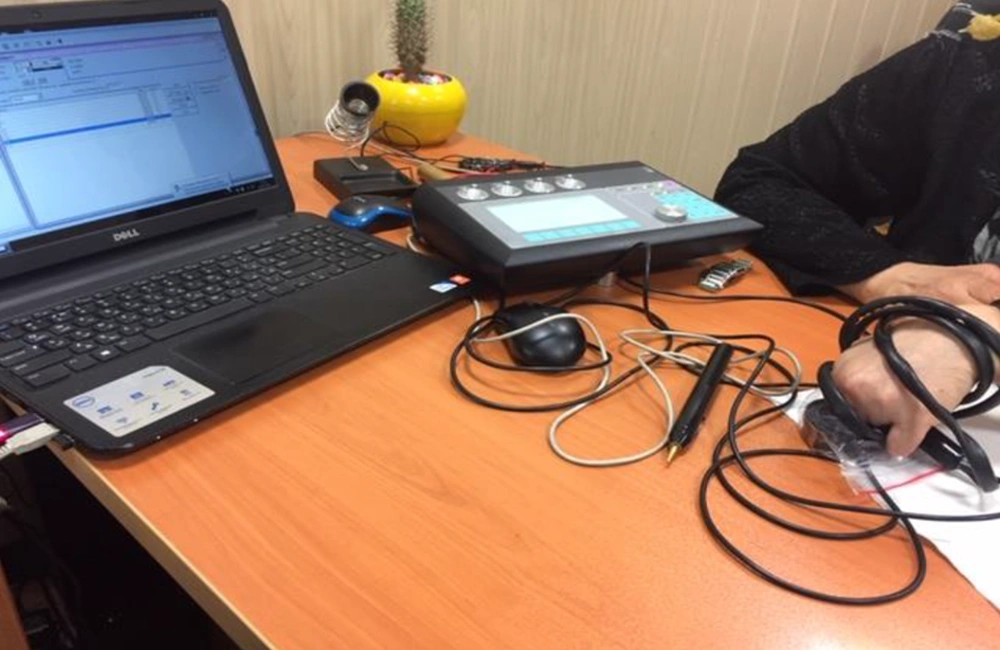1. Introduction
Phantom limb pain (PLP) is a burning sensation experienced in a body part being amputated or subjected to trauma. The term was coined by a military surgeon in the 16th century and a civil war surgeon in the 19th century (1, 2).
In the United Kingdom, the number of amputee service members has substantially increased (3). According to recent research, the prevalence of this complication is higher in upper limbs than in lower limbs (4). One approach that has emerged in recent years is the use of electromagnetic waves as a bioresonance method to alleviate phantom pain (5, 6). Bioresonance is a non-invasive procedure for early detecting the disease on the basis of emitting very low-frequency electromagnetic waves to the patient’s body and then receiving feedback to retrieve the information acquired (7). Living cells emit electromagnetic radiation at various wavelengths, which these frequencies and wavelengths change in diseases. The present research describes a patient referred to Amirkabir University's Bioresonance Clinic for bioresonance therapy.
2. Case Presentation
The patient was a 71-year-old female who had her three middle fingers amputated. The discomfort was not relentless and had an on-and-off mode, presenting with sparking and tingling extending to the forearm. The excruciating agony was so extreme that it kept the woman awake and forced her to have surgery.
The patient was diagnosed and treated at the Bioresonance Research Center (Figure 1). According to the woman, there was a substantial improvement in her discomfort after approximately 20 sessions of therapy for three months. Various direct electromagnetic waves were emitted for 45 minutes during each session. These sessions lasted about 16 months, depending on the condition of the patient. Finally, assessing the patient’s condition revealed that up to this stage, the therapy’s outcome was reasonably satisfactory in terms of pain relief and stability. During bioresonance therapy, the patient did not take NSAIDs or steroids. Total pain severity was measured using a Visual Analogue Scale (VAS) (8) in the first session and after the therapeutic procedure.
3. Discussion
The current report sought to demonstrate the efficacy of electromagnetic waves in the treatment of PLP. Bradbrook's thesis involved two patients treated for PLP by acupuncture, and histological research revealed that classical acupuncture points engaged a large number of nerve fibers.
In a healthy body, energy flows steadily and harmoniously through tissues and organs, according to traditional Chinese medicine. As energy is focused on a single portion, instead of several ones, of the meridians, disease symptoms arise. Acupuncture, as well as bioresonance therapy (9) can help to correct these energy imbalances.
The recovery of the patient from PLP by electromagnetic waves in the current study was consistent with the findings of a study on 15 patients with PLP by Bacon et al. (2011). They found that low-frequency and low-intensity electromagnetic fields considerably relieved pain in their participants (10). In our study, we demonstrated the effectiveness and favorable outcome of emitting a large body of electromagnetic waves with precise, rather than broad-spectrum, frequencies on the patient’s body.
According to Jonas Moberg's research, the rats receiving a low-frequency oxytocin regimen for 30 minutes had higher levels of oxytocin in their blood and cerebrospinal fluid. Oxytocin, in addition to its analgesic properties, promotes emotional balance and decreases stress (11). Ahmed demonstrated that the magnetic stimulation of the motor cortex could reduce pain in PLP patients (12). Another study proposed that magnetic stimulation at 1 Hz could be effective for treating upper extremity PLP (13).
3.1. Conclusion
Bioresonance therapy is physiologically safe with minimal and no clear side effects and effective in alleviating certain PLP symptoms by employing low-frequency (ELF) and extremely low-frequency (VLF) electromagnetic fields. So, it is advised that all patients with PLP consider this treatment.

